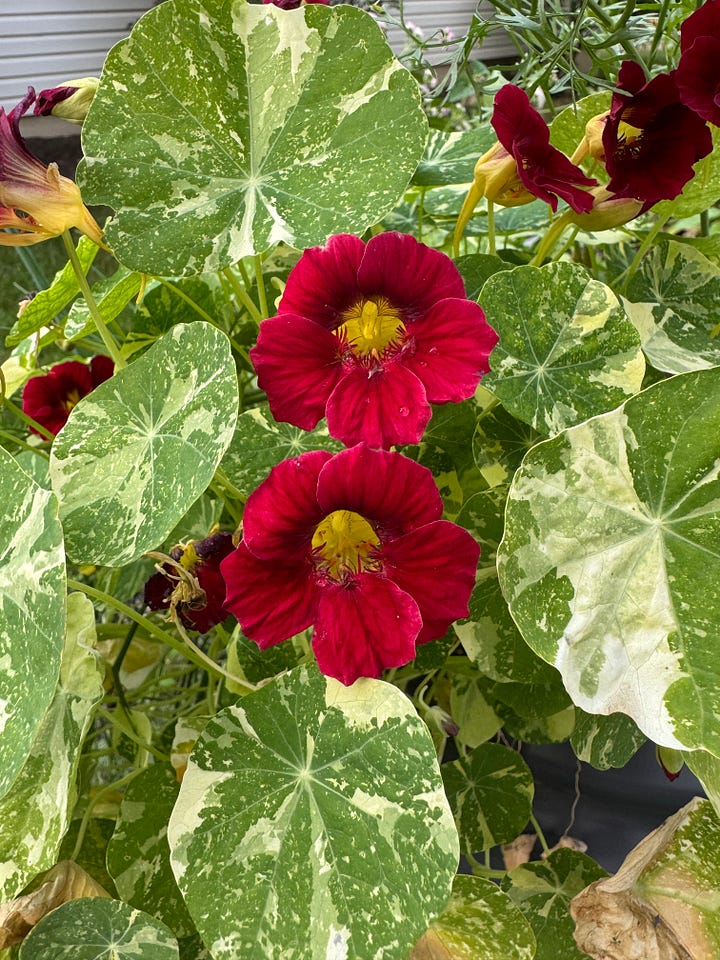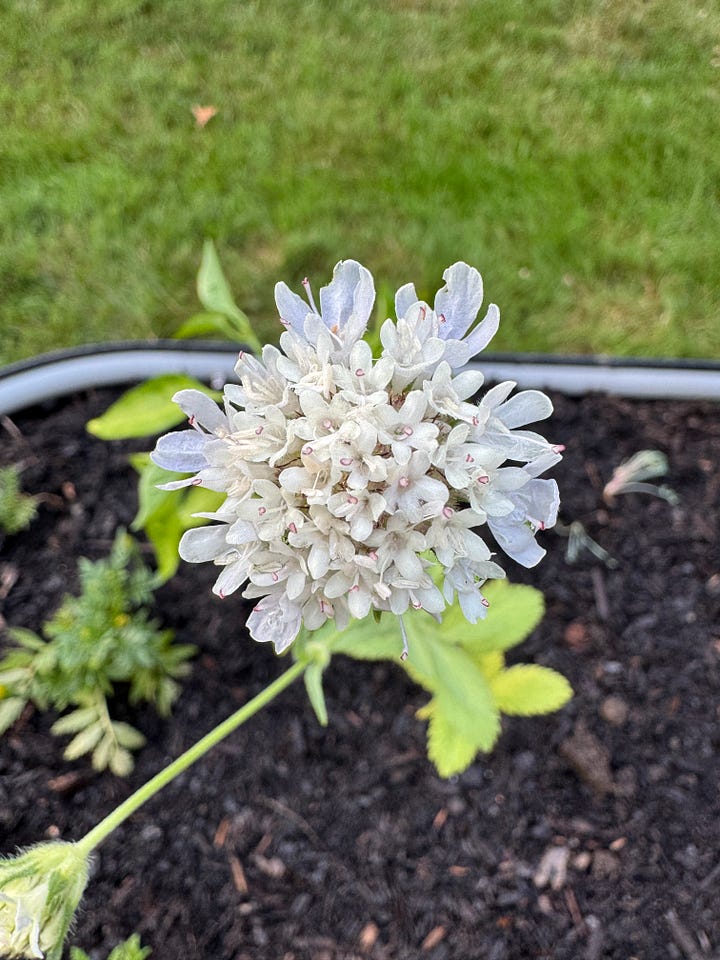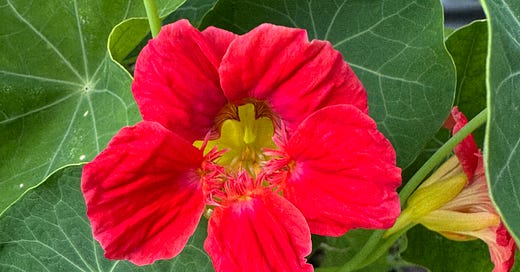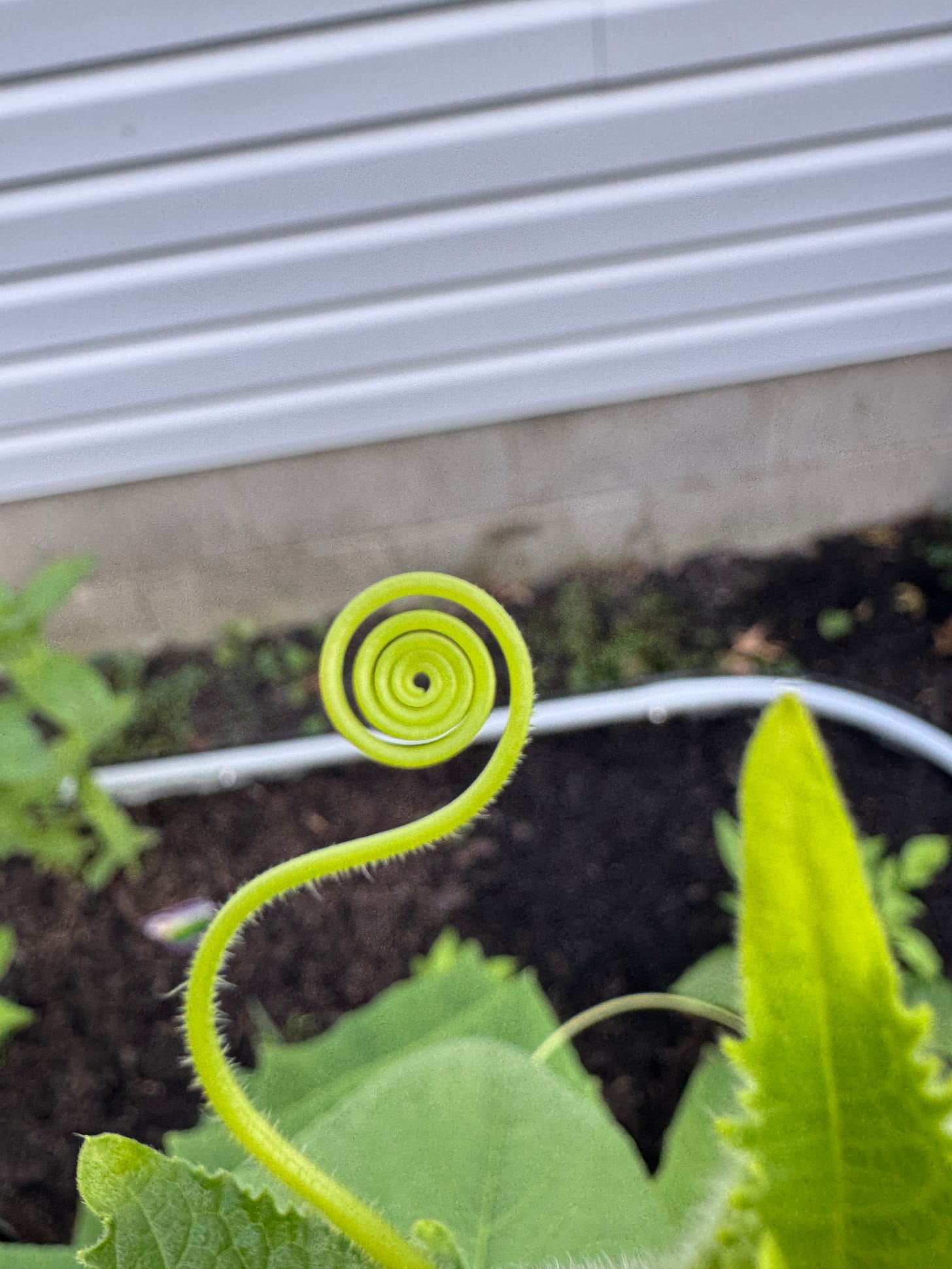We’ve hit that weird little in-between point in the season.
The seedlings have grown up. The weeds are on a personal vendetta. Everything looks pretty calm, but behind the scenes, your garden is working overtime, flowering, setting fruit, dealing with bugs, surviving heat waves, and prepping for harvests that are so close you can almost taste them.
If you’re in Zone 6 like I am, here’s what’s happening right now, what I’m doing in my own garden, and a bunch of tips I wish someone had told me when I was first figuring all this out.
Tomatoes Are Flowering—Now What?
Tomato season is officially here. Not harvesting yet, but the blossoms are showing up and the vines are stretching like they own the place. This is go time for setting fruit.
Here’s the thing most people don’t realize: just because your tomatoes are flowering doesn’t mean they’re automatically going to produce fruit. This stage needs some love.
Here’s what I’m doing right now:
Shaking the flowers. Literally. Tomatoes are self-pollinating, but a little movement helps get the pollen where it needs to go. I give the support stake or cage a gentle shake every morning when I do my walk-through. You can also use an electric toothbrush or a paintbrush if you’re feeling extra.
Watching for blossom drop. If flowers are drying up and falling off before fruit forms, it’s probably stress. Usually too much heat, inconsistent watering, or not enough potassium.
Shading the drama queens. Once temps are hitting 85°F+ every day, the flowers can get fussy. A little shade during the hottest part of the day can help keep the plant focused on fruit, not just survival.
Light pruning. I’m snipping the lower suckers to help airflow and direct energy upward. If your plant looks like a jungle, no need to go wild, just start small. One or two cuts every couple days goes a long way.
Cucumbers Are Starting to Spiral
My cucumbers are finally doing their thing, and honestly, the tendrils are the main characters right now. They’re wrapping around everything, each other, my trellis, a nearby marigold that did not ask to be hugged. Classic cucumber chaos.
Here’s what’s helping right now:
Train them early. If you’ve got a trellis or archway, now’s the time to get those vines going in the right direction. Once they grab on, they won’t let go, so help them find their footing before they strangle the zinnias.
Mulch is not optional. It’s hot. The soil dries out fast. Cucumber roots are shallow, and they do not like drying out. A thick layer of mulch (I use grass clippings, shredded leaves, or straw) helps hold moisture and keep the base cool.
Harvest small, harvest often. Baby cucumbers = better taste and more production. Once a plant thinks it’s made seeds, it starts to chill out. Keep picking and you’ll keep the fruit coming.
Bug patrol. I’m already seeing cucumber beetles and a few suspicious-looking spots on leaves. I check every morning, under leaves, near the base, and along the vines. Squish or flick bugs into soapy water. Don’t wait for it to get bad.
Zinnias = Peak Summer Vibe
My zinnias started blooming last week and they’re about to go wild. They’re honestly one of the easiest flowers to grow and one of the most satisfying. And they love heat, so now is their moment.
Here’s how I’m keeping them going:
Cut regularly. Zinnias are the queens of “the more you cut, the more you get.” I take at least one bouquet inside every few days, and deadhead anything I don’t bring in.
Cut the right way. Snip just above a pair of leaves where you see new shoots forming. That’s how you get bushier plants and more blooms.
Spacing matters. If you planted your zinnias a little close (don’t worry, I did too), you may start to see powdery mildew or weird leaf spots. Space them out if you can, water at the base, and snip off any funky leaves.
Let one or two go to seed. Toward the end of the season, I let a few blooms fully dry on the plant so I can collect seeds for next year. Instant legacy garden status.
Mid-July Garden To-Do List (Zone 6 Style)




This is the part of the season where the garden feels like it’s on autopilot—but trust me, the things you do (or don’t do) now can totally change what you harvest next month.
Here’s what’s on my list this week:
Feed the fruiting plants.
Tomatoes, cucumbers, peppers, squash, all of them need a little mid-season boost. I’m side-dressing with worm castings and compost. If you use fertilizer, look for something lower in nitrogen and higher in potassium/phosphorus.
Start seeds for fall crops.
I know it feels early, but now’s the time to start fall things like kale, beets, broccoli, and carrots. I like to start them in trays in the shade and transplant later.
Check for pests daily.
The Japanese beetles are back (ugh), and I’m seeing early signs of aphids on new growth. The key is catching things early before they explode. It’s a 3-minute daily habit that saves hours later.
Harvest your herbs.
Cilantro is probably flowering already (mine is), so I’m saving seeds (aka coriander), and cutting what I can before it gets too bitter. Basil, dill, parsley, and thyme are all ready for a nice trim, either to dry or use fresh.
Garden Vibes Right Now
If I had to describe the garden right now, I’d say it’s in its “quiet hustle” era. Not everything is ready, but everything is working. There’s still beauty, but also a little chaos. The vines are climbing, the tomatoes are plotting, and the bugs are testing my patience.
But honestly? I kind of love this part. There’s something sweet about the anticipation, the sense that something delicious is on the horizon if I just keep showing up, watering, watching, and waiting.
So that’s what I’m doing. Showing up. Pulling weeds. Harvesting tiny cucumbers. Talking to my tomatoes like they’re my coworkers.





